Rabbit Medical Information and Resources
Your Rabbit's Poop and What It Means
Rabbit poop can be categorized into two different types: fecal pellets and cecotropes.
Fecal pellets are the round, dry poop balls we’re all familiar with. Cecotropes are smaller, moist balls normally bunched together, and your rabbit eats them!
Rabbit Poop
The Scoop on Poop
We’re going to first discuss rabbit fecal pellets and how they can give us insight into your rabbit’s health.
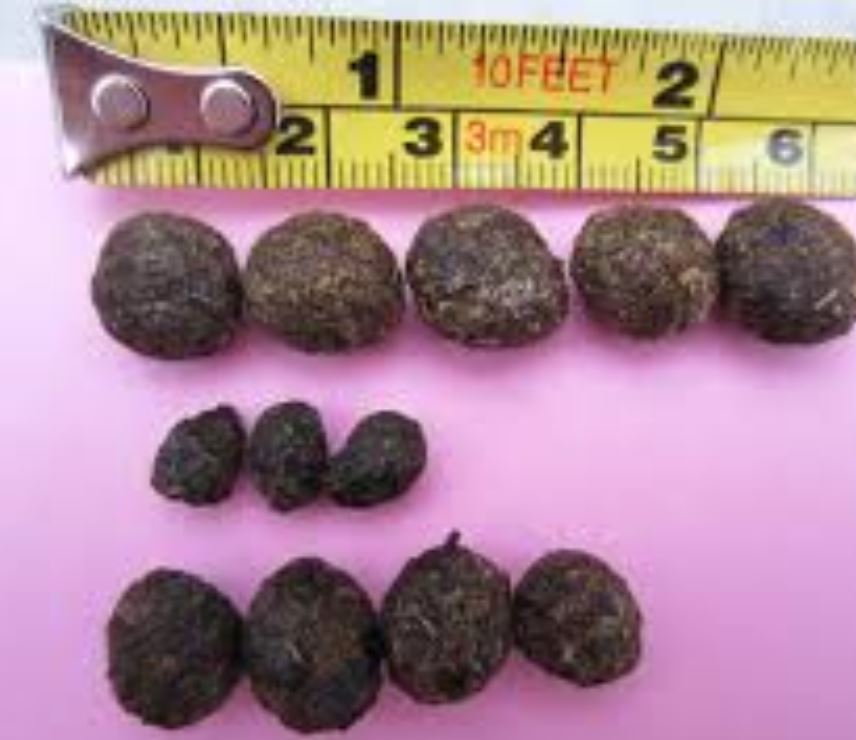
Rabbits’ health depends on how well their digestive system is moving. Because of this delicate system, oftentimes we can detect an illness early by noticing the changes in our rabbit’s poop.
As a rabbit caretaker, it is a good idea to make a habit of checking your rabbit’s poop for changes every day to keep track of your rabbit’s health.
What Healthy Poop Looks Like
If you live with a rabbit, you know what their poop looks like. Small, brown, cocoa puff-looking balls that end up in the litter box, or scattered everywhere around your house.
Normal, healthy fecal pellets should be round, somewhat dry, and composed of mostly hay. Rabbits do not ordinarily re-ingest fecal pellets, though a few bunnies have been known to enjoy the occasional fecal pellet hors d’oeuvre with no harm.
Having these nicely round, medium dry fecal pellets means your rabbit’s digestive system is working how it should.
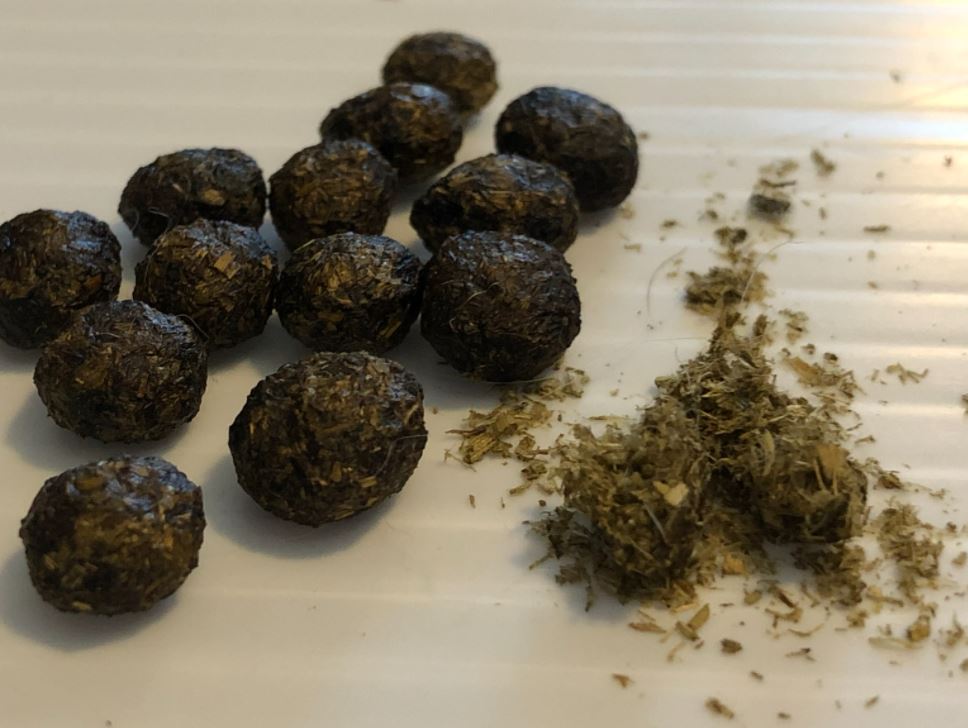
What Unhealthy Poop Looks Like
Rabbit poop can be “bad” in a variety of ways, depending on what’s going wrong in their digestive system. Below are some common “bad” types of poop, and what they could be telling you about your rabbit’s health.
Runny Stool or Diarrhea: A Cause for Alarm
True diarrhea is when the poop is watery and without form. Diarrhea is not normal in rabbits and is a sign something is wrong.
Diarrhea in rabbits can be caused by several things, but only a rabbit-savvy veterinarian can truly identify the cause.
Possible causes of Diarrhea in Rabbits:
- Diet. Either an overload of carbohydrates (sugars, like carrots) and/or lack of fiber such as hay
- Inappropriate antibiotic use (many antibiotics are not safe for the rabbit’s GI tract)
- Toxins from the environment such as heavy metal, toxic plants, toxic paint, etc.
- Environmental stress (a really loud house, children or animals trying to get to the rabbits constantly, etc.)
- GI neoplasia (cancer)
- Genetic predisposition
- Severe metabolic disease such as kidney or liver disease.
- Internal parasite infestation like coccidia.
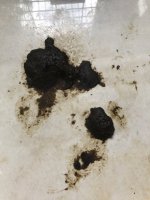
This photo shows what diarrhea in rabbits can look like. If your rabbit poops like this, you need to get them to a rabbit-savvy veterinarian immediately.
*Important Note: The most common causes of diarrhea in a rabbits are an inappropriate diet and/or inappropriate antibiotic use.*
"String of Pearls " Poop: Time to Groom
When you see poop strung together like the photo to the right, it means your rabbit is eating and digesting their fur. This “String of Pearls” poop is a heads up that your rabbit needs more regular grooming, or risk a hair blockage in their intestines.
You may notice this particular problem only occurring at certain times during the year. That’s because rabbits go through shedding cycles, or “molts”.
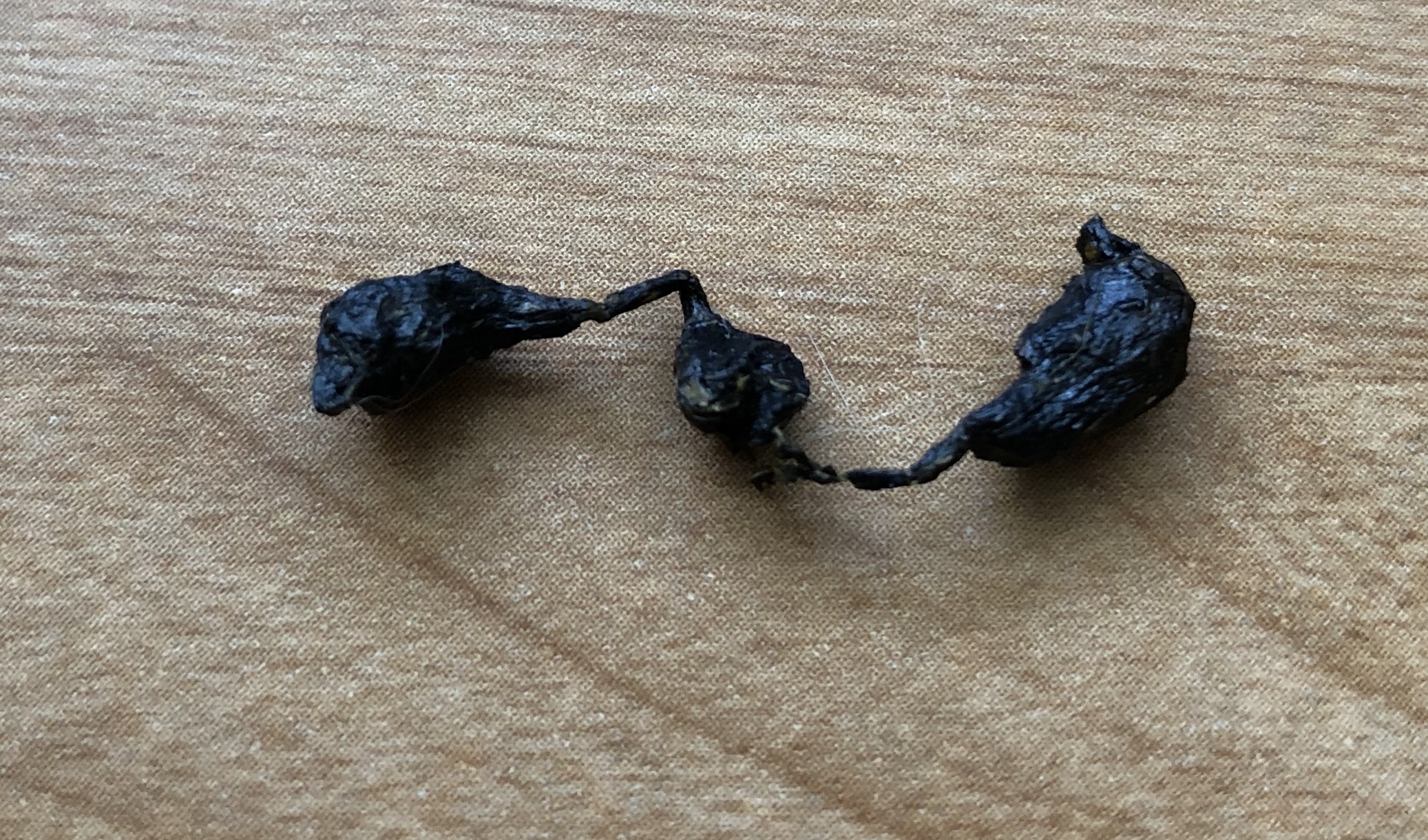
Photo Credit from The Educated Rabbit
Proper grooming, especially during a molt, and plenty of fresh hay will help keep the digestive tract moving and the hairball threat low.
If you find the litter box has no droppings in it, a vet visit is needed to see if your rabbit could have a blockage
Hard, Deformed, and Small Fecal Pellets
Fecal pellets that are abnormally small, hard, and dry suggest that your rabbit is not drinking enough water. It could also mean your rabbit is not eating or drinking enough in general.
To figure out exactly why your rabbit’s droppings are like this, you need to take them to a rabbit-savvy veterinarian.
Some people also think that small, hard fecal droppings can mean the rabbit is overly stressed.
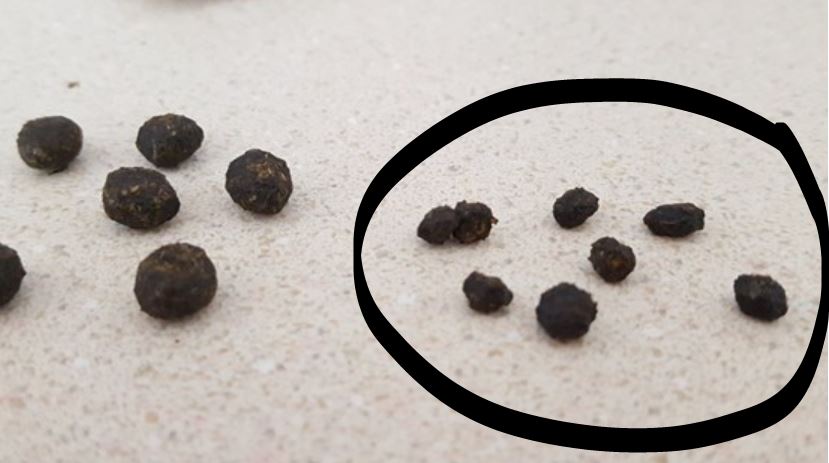
Photo comparing normal rabbit poop to the small, dry fecal pellets.
Mucus Covered Poop
Mucus in your rabbit’s poop will look like a clear blob of jelly on or surrounding the fecal pellet.
Mucus in your rabbit’s stool suggests irritation in the gut and can be caused by antibiotics, oral pain medications, or anything that may cause slow or intermittent intestinal contractions.
It’s very common for bunnies when they come out of GI stasis or for older rabbits with chronic dental issues.
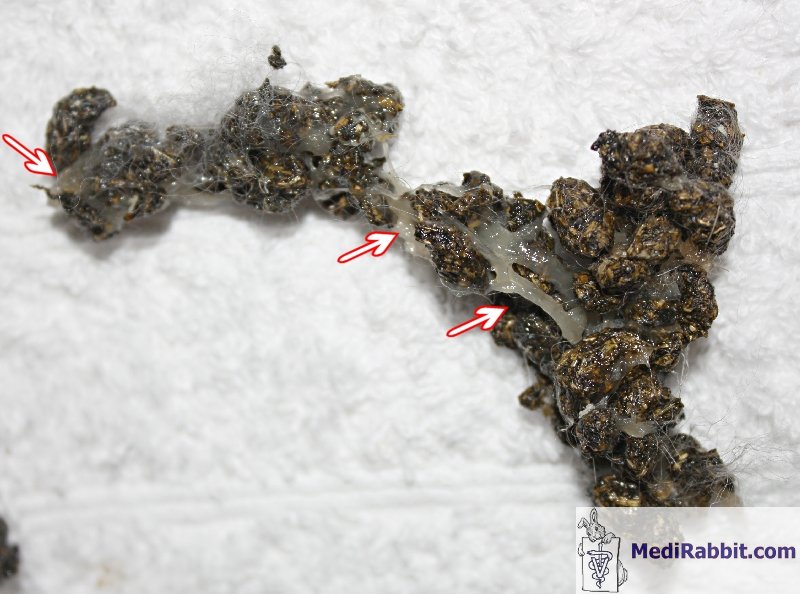
Photo of mucus covering hard, deformed rabbit fecal pellets after a surgery. Photo Credit MediRabbit.
Rabbit Poop
Cecotropes
Cecotropes are the other type of normal rabbit poop. You can identify cecotropes by their little clusters of moist, packed droppings. Cecotropes are packed with nutrients for your rabbit and are extremely important.
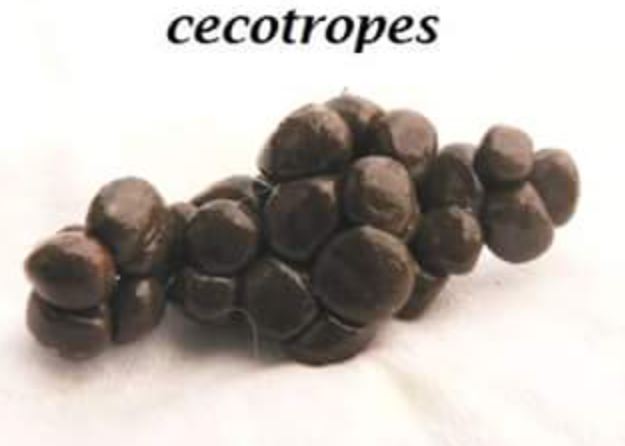
Above photo is a classic example of a healthy cluster of cectropes.
These little clusters of nutrients are produced in the rabbits’ cecum, where natural bacteria and fungi live and transform the indigestible parts of a rabbit’s diet into this essential dietary item. And yes, that means your rabbit needs to eat their cecotropes to get all the nutrients they need from their food.
Usually, rabbits will eat their cecotropes right out of their anus, so you’ll see very few ever lying around. But on occasion, you might find a cecotrope here or there that your rabbit missed. If you start to see a lot of cecotropes lying around uneaten, it may be time to look at your rabbit’s diet. Rabbits will overproduce cecotropes when they have too much sugar in their diet.
An interesting fact is that cecotropes are more often produced in the evenings, rather than all day long like normal rabbit poops. However, the timing of cecotrope production depends on the individual rabbit.
Other Websites with Good Rabbit Poop Articles
Good vs Bad Rabbit Poop is a popular subject in the bunny world, check out some of these other great, informative articles about your rabbit’s poop and their health.
